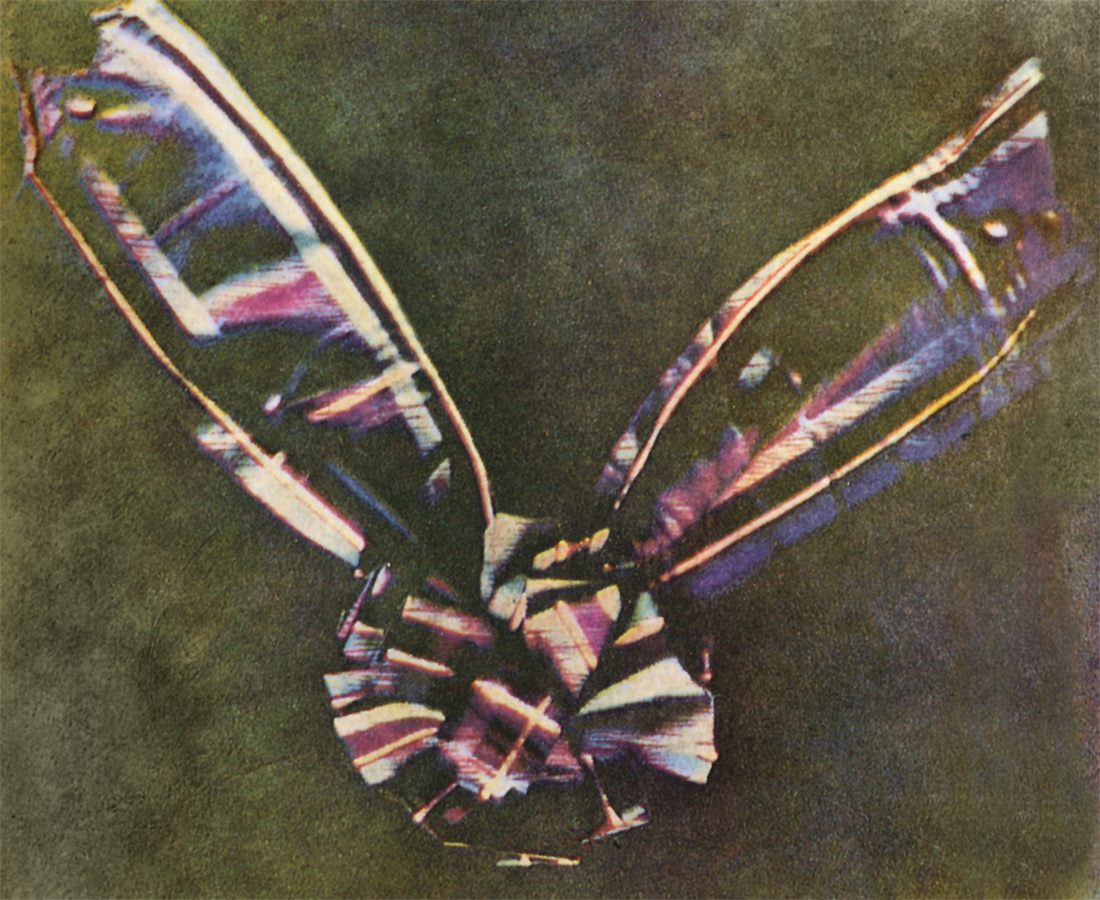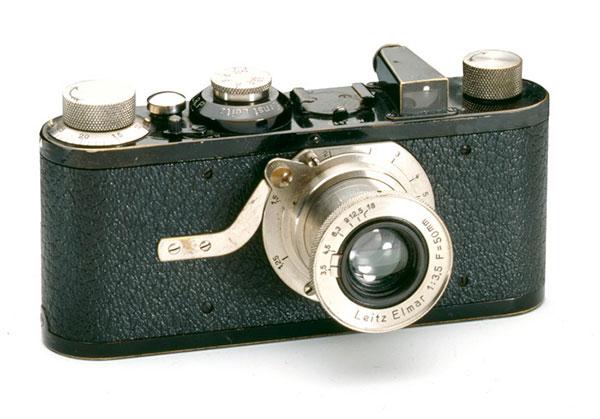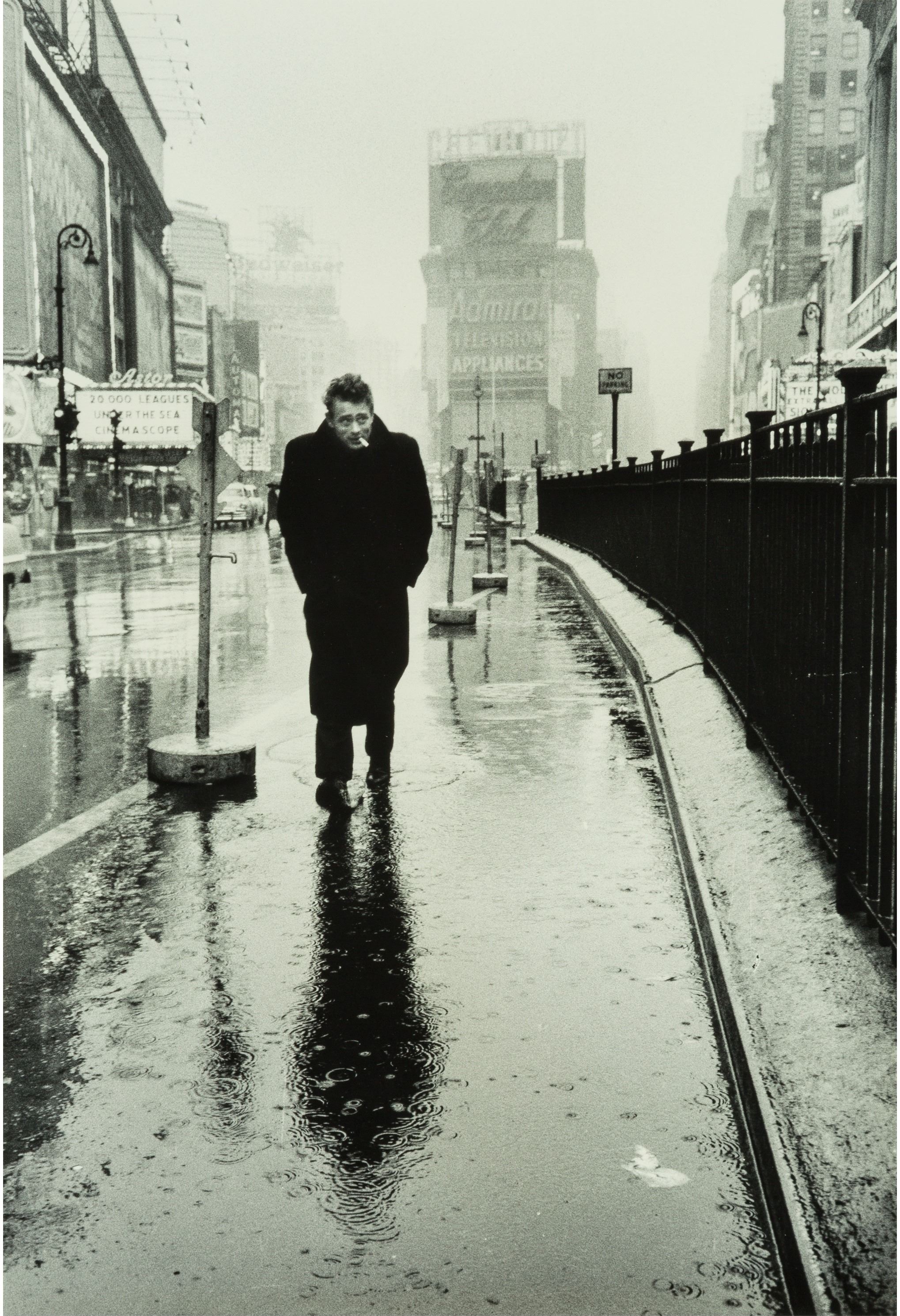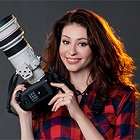History of Photo Editing [1826-2019]

Brief History of Photography
Everything in the world has its beginning. Everything is constantly growing and improving. The history of photography developed gradually as well. It is directly related to the photographic equipment evolution (cameras, lenses, flashes, etc.). This article is a kind of a visual timeline of photographic history.
The First Photo in the World

In 1826, the Frenchman Joseph Nicéphore Niépce surprised many people by taking the first photograph in the world. It was created using the “camera obscura” on a tin plate covered with a thin layer of Syrian asphalt. The oldest photograph in existence depicted a view from the Niépce’s workshop window. It was created within 8 hours, continuously being in direct sunlight.
The First Color Photograph

Undoubtedly, the emergence of the world's first color photography has influenced the development of photography editing significantly. The oldest color photo was taken by James Clerk Maxwell.
An English physicist experimented with color filters to achieve this result. He combined three images with different filters (green, red, and blue) to get the photo. The scientist often showed it to his students. Maxwell’s picture left its mark on the photography history and image manipulation.
Creation of a Modern Photo Paper

This event also occupies an important place in the history of photo manipulation. In 1879, J. Swan opened the first production of special gelatin-based halogen-silver photo paper, which has become the main element in the production of photo paper and is still used in industrial manufacturing today.
By this time, workers involved in the production of photographic prints could already slightly adjust the tonality and contrast of the image.
The Beginning of the Kodak Company
 Thomas Edison - founder of GE; Eastman - founder of Kodak
Thomas Edison - founder of GE; Eastman - founder of Kodak
After a trip to England, the American banker George Eastman opened his "Eastman Dry Plate Company” in America in 1880. It was later renamed and registered as “KODAK” in 1888, starting its long and eventful history of Kodak company.
Moreover, the first camera of this brand was released in the summer of the same year. This event sped up the development of photo manipulation history.
Photographic Film Starts to Gain Worldwide Popularity

The history of photography continued. In 1884, D. Eastman received a patent for roller film on a paper substrate and cassette, which was a great innovation.
After that, in 1888, D. Eastman received a patent for a portable camera, which housed this roller film. In 1889, the mass production of the film started.
The First Camera of the Iconic Company Leica

In 1911, Oskar Barnack started working in the German company Leitz. He made a huge contribution to the further development of the history of photo editing. Thanks to his efforts and research, in 1925, a new type of small-format camera, which worked on a standard film, went on sale.
It was called Leica I (the name came from the merging of two words – “Leitz” and “Camera”).
Beginning of the Instant Photography History

In 1948, Polaroid made a breakthrough in photography by launching the Polaroid Land 95, which opens the era of instant photography.
- Check out good instant cameras.
Transition to Digital Cameras

In 1975, Kodak engineer Steven Sassoon designed and introduced the first digital camera to the public and start history of digital cameras. The matrix of this camera had 0.1 megapixels resolution.
The growing public interest in photography required a more convenient model and mass production. In 1988, FUJI introduced a truly portable FUJI DS-1P digital photo camera.
Retouching Before Photoshop
Today, each of us uses Photoshop or Lightroom to improve almost every image. What did people do before to change their pictures? The history of photo editing began to develop gradually since the advent of the first cameras.
Nevertheless, it is worth noting that this process was quite complicated. It required a lot of time and financial costs. Only the richest photographers could afford to slightly change their images.
However, photo equipment was developing, and new editing technologies appeared, which became available to more people.
The World's First Photo Editing in History

In 1841, William Henry Fox Talbot patented calotype, the first practical photographic process that created a negative that could generate multiple copies. Just five years later, in 1846, the first famous example of photo manipulation was documented by Talbot's colleague Calvert Richard Jones.
Jones took a photograph of five Capuchin monks on the roof of a building in Malta, but while four of the monks were gathered in a group, the fifth one was placed a few feet behind them.
Jones did not like how this fifth monk destroyed the integrity of the scene and painted over the figure on the negative using Indian ink. In a positive print, the place where the fifth monk stood began to look like a white patch of sky.
How the Photoprocess Was Changing

Over the next 30 years, by 1878, the wet plate collodion process was invented, followed by gelatin-silver (dry) photoprocesses. They are one of the most important examples of manipulation in history.
Both of these processes used glass negatives at first, which were well suited for manual image retouching. Negatives from the flexible film became popular after 1913 and were also retouched using the same methods.
How Was the Image Retouching Process Carried Out?

The image retouching process always proceeded according to one scenario, regardless of the type of negative, and was unchanged for a long time in the history of photo manipulation. After exposing the negative in the camera, it was processed with chemicals in the “darkroom” in order to develop and then fix the resulting image.
Some photographers varnished the negative to protect it from damage, while others preferred to retouch the negative first, and only then preserve it.
Image retouching was carried out on a special table. This is a device with a variable inclination angle of the working surface. The negative was placed on a special frame and shone through from behind using an adjustable mirror or any other reflective surface.
There were curtains on top and sides. They helped avoid stray light.
Even the Location of the Table Was Very Important

Meanwhile, the history of photo manipulation is moving to a new level. According to the manual for retouchers of 1898, the photo editor had to place his or her desk in front of a window facing north, because the light on the north side was “less changeable.”
Most of the manipulations were carried out on the negative side, coated with emulsion. The manual also stated that it was necessary to make a test print in order to determine more accurately which parts of the image require correction.
Face Retouching as the Exquisite Workmanship

For such detailed work, retouchers used a blade similar to a surgeon's scalpel. This process has been called etching. It was a very delicate procedure. Only experienced retouchers were allowed to do it.
Portrait photographers considered etching an invaluable part of perfecting their clients’ images. This process took a worthy place in the history of film editing timeline. As soon as the retoucher finished lightening certain areas, he or she proceeded to darken the other ones, using a hard graphite pencil or brush dipped in ink or watercolors.
However, first, the picture editor had to prepare the surface of the negative to make it stickier. He or she polished the negative with pumice powder or cuttlefish bone very delicately.
Then paint or a special image retouching mixture was used (a liquid based on turpentine mixed with balsam or resin). This method had a great advantage. The dried layer of this mixture could be removed very easily in case of a mistake.
- Find out more about Photoshop history.
The Main Difficulties of Photographers in the Past

On the path of history of photography editing development, photographers and retouchers faced many difficulties. For example, they had to take many pictures to choose only the worthiest one.
In addition, the models had to spend long hours in the studio to get perfect portrait shots. Undoubtedly, the emergence of Photoshop and Lightroom became a new stage in the history of photo editing.
Image Retouching in the 20th Century

Let us scroll the history of photo manipulation a bit back and stop in the middle of the 20th century. At this time, the geniuses of photography enter the scene. For example, a world-renowned American journalist and professional photographer, Magnum Photos employee Dennis Stock.
His photograph, "The Portrait of James Dean in Times Square," was among the "photographs that impressed the world" list according to The Times newspaper. Nevertheless, would this picture have become so amazing if Magnum Photos retouchers had not worked on it?
What Has Changed Today?
 Portrait of actress Joan Crawford taken by George Hurrell, 1931
Portrait of actress Joan Crawford taken by George Hurrell, 1931
Modern image retouching techniques are improving every day, making the lives of many people involved in photography easier. Today, anyone can easily remove or add any element to the photo.
When editing portraits, retouchers can enhance skin tone, remove its imperfections, whiten the teeth, and perform tons of other actions. However, it is necessary to study the history of photo editing to know where it all began and in which direction to move on in the future.
History of Photo Manipulation in Timeline
As you have understood from the examples of manipulation in history, it was a hard task requiring a lot of patience for a photo maker to get an interesting shot. If their goal was to get a breathtaking and attention-grabbing picture, they would have had to transport all the heavy equipment back and forth until some fascinating thing occurred next to them.
For taking nature shots like a sunrise or sunset they would have to get to the place before that happens and set their equipment and wait.
The First Experiment

The experiments begin in the 1860s, a few decades after Niepce create the first photograph in 1814. What seems today like the most recognizable and oldest photograph in existence, the solemn and powerful portrait of Abraham Lincoln is nothing but a collage. His head was skillfully joined with John Calhoun’s body.
- Read more about photo manipulation ideas that are being used today.
Adding Those Who Missed the Photoshoots

Already in the 1910s, commercial studios offered a manipulation editing service of joining some people that were not able to come for taking the group portrait. Such agencies use several separate pictures for this purpose.
Changing History

A photograph from 1937. The picture shows the meeting of the Nazis with the Leni Riefenstahl family. Joseph Goebbels was completely removed from the original photograph.
What reasons for photo editing Hitler gave is not specified so we don’t know how the Minister of Propaganda displeased him but at that time there were unwanted rumors about the connections between Joseph and Leni.
Creation of Heroic Images

Here is an interesting example of the history of photo editing from 1942. Benito Mussolini is riding a horse, raising his sword above his head. To make it look magnificent, the stableman was removed from the photograph.
Interesting Tricks from National Geographic

1982: A famous case in the history of photo manipulation from National Geographic. The photographer, Gordon Gahan, took a great picture of the pyramids for the main story of the magazine about Egypt.
But the picture didn’t fit the format of the cover, so a decision was to “squeeze” two pyramids together. Tom Kennedy, the next director of the magazine, stated his disapproval of such methods. He said that they admitted that was a mistake and learned to avoid manipulations done for the sake of a more compelling graphic effect, assuring that this would not be repeated anymore.
- Read more about National Geographic best photos without landscape retouching.
Glossy Magazines Didn’t Miss New Opportunities

1989: Another famous case in the photo manipulation history appeared in TV Guide. As an advertisement for a daytime talk-show, the magazine had a photograph of Oprah Winfrey on the cover.
At least the top part of the photograph was her, but the whole body belonged to the actress Ann-Margret and was taken from a 10-year-old picture. Neither of them gave permission for such a collage and the act itself was uncovered by the actress’s fashion designer because the dress was recognizable.
Age of Realistic Changes in Photos

1997: This story was covered by many periodicals and the same picture of Kenny and Bobbi McCaughey was used, shot after the birth of the septuplets. Time put the unaltered image on its cover, exposing Newsweek with this action because the latter performed some image retouching.
There were many accusations following this attempt of beautifying Bobbi by straightening her teeth. Looking at the history of film editing timeline, you won’t encounter such subtle transformations but in the 90s the digital cameras combined with powerful computers made it possible to do a whole different type of image editing.
With that, it became more difficult to detect signs that can reveal if a photo is fake.
Ideal Works of Our Time

2009: A touching example of photo manipulation as a part of a series of shots from Vanity Fair dedicated to the actor-director dynamics. A photo of Heath Ledger (who died in 2008) from the promotion of an earlier movie was used, with Christopher Nolan on the left skillfully inserted in the frame with the help of a computer.
Popular Tricks of the Past
In the early history of photo manipulation, a photographer already had a few tricks he/she could use to improve the result. Most commonly, they combined printing, exposure variations, photomontage techniques, and alterations on the negative.
From the very beginning, people wanted to improve the photos, much the same as people do now with the use of computer programs. In the earlier times, people wanted to see the missing or even deceased relatives in their shots, do artistic experiments, and express political satire with their help.
Ghost Photos

Probably the most touching part of the history of photo manipulation is the pictures where living people are joined with those who passed away. You won’t be too wrong supposing that this was where the history of Photoshop should be starting.
People were longing to stand next to those they loved, at least in an image if that was no possibility in reality. We know now that those were not ghosts.
Photo manipulators had to take two different shots taken most likely in different times and places and combine them into one. It sounds easy now but back then that was a hard task to make the final image realistic.
Vivid Satire
Some photographers occupied themselves with revealing the flaws of the political movements of those times. You can find many striking and controversial entries in the history of photojournalism timeline, such as the one below. The name John Heartfield, or rather the pseudonym of a German photographer Helmut Herzfeld, is particularly strongly connected to this such satire, with many works expressing his attitude towards the World War II and its leader.
His works were so powerful that he is considered the founder of a direction called political photomontage.

Despite living in Germany, he was opposed to the regime so strongly that he created and published those satire pictures risking his own life every day. In any book on the history of photo editing, you will find Heartfield's name mentioned numerous times.
He used symbolism, alienation, and satire, expressing his opinions in the collages, and many were influenced by these laconic messages. Exposing fascism as his greatest enemy, he put the major figures of this movement and those, who provided them support as main characters.
Humorous Photos

Another large chapter in the history of photo editing that would look rather out of place nowadays but had enormous popularity in its time is devoted to such odd images as you can see here.
One of the most known examples is that of a fish eating men, which retained its popularity for quite a long time.
Another common humorous image is people wearing super-hero outfits. Those filled in a large part of the history of Photoshop usage, or any other similar program, and no doubt assisted in developing certain features.
It was in fashion to get such pictures while you were traveling, but not necessarily only then. The main reason for getting them was the desire to laugh, but this silly thing helped software developers push forward the programs that are now an indispensable part of our lives.
Photos of Whole Teams

Such group photos that have been altered are a great part of the history of image editing. Most commonly, people would be either added to or deleted from such group shots. If you check out a visual timeline of photographic history, you will see many examples of such manipulated photos as that was the most widespread trick.
With time, photographers and photo manipulators learned to do it better, removing not only people but other items. They would often use this to alter team photos taken before someone dropped out of it, which allowed the teams to avoid constantly taking new pictures.
This is often used for images of teams playing sports. We can still find this type of photo manipulation today, in our wedding photos or, sometimes, family portraits.
Famous and Interesting Works of the Past
More than a century and a half ago, photographers already developed some photo editing skills needed for various purposes. For example, it was difficult to set an exposure for landscape photography in which the sky would not be overexposed.
Therefore, they combined two images, each exhibiting a different exposure, and then connected them along the horizon line. The advertising industry has resorted to photo manipulation in order to improve the look of the merchandise being promoted.
The art community has also found the potential to manipulate narrative and surrealistic images in image manipulation. I have prepared 10 examples, as they seemed to me, interesting and creative photo manipulations of the past.
1. The Ghost of Lincoln

Probably the most famous picture in the history of photo editing This is a shot of Abraham Lincoln’s wife taken in 1870 after he passed away and at that time people were convinced that a real ghost was captured in this photo. Are you wondering whether this is a great joke or an otherworldly phenomenon?
- Read more about optical illusion photography samples, created without Photoshop.
2. Double Exposure of the Past

This photograph can rightly be considered the ancestor of the Double Exposure, which was also made quite realistic for the year 1855. The author of the photo remained unknown.
- Read more about Double Exposure tips.
3. Fingers of Fate - the Tightening Grip

In one Munich postcard from 1914 a giant German footsoldier is bashing together the heads of the Triple Entente soldiers representing France, England, and Russia. The postcard has a humorous caption saying “powerful collision.”
One of the greater examples of photo editing followed a couple of years later in England, where a publisher put out a card depicting a large hand that with tightening grip around Kaiser Wilhelm II, with pictures of the Allied leaders carefully placed on fingernails and the wrist.
4. Pump

In this image from 1899, an unknown author decided to add a bit of humor and created the effect of a pump-inflated head of the main character.
5. A Woman in a Champagne Glass

Howard S. Redell created this photo manipulation in 1930 and he managed to place a naked girl in a beautiful transparent glass quite realistically. At the same time, we can see that the retoucher tried to create small drops of water around the model.
6. An Airship Moored at Empire State Building, New York

An interesting photography editing trick, which doesn’t immediately look deceptive due to preserving the realistic size of the airship and skyscraper. The photograph is from 1930, the author, unfortunately, is unknown.
7. A Man on a Roof with 11 Men on His Shoulders

The photo of an unknown author, which dates back to 1930 and is quite recognizable among users as it looks very unusual, and the men around manage to create a perfect circle with almost all parts of the body.
8. Dream No. 1: Home Electrical Appliances

An interesting example of photo manipulation from 1948 in which the lamp support is replaced by a young attractive woman. It is worth noting that the retoucher was able to connect the hand of a man and the girl herself very realistically.
9. Me + the Cat

It seems to me that a photo of Wanda Walz from 1932 is an old prototype of modern applications that add animals and various masks to the person’s face.
10. Jerry N. Uelsmann, 1976

Jerry N. Uelsmann is a photographer, who was one of the first in America to become interested in photo montage, and this photo is proof of his professionalism. It seems that his pictures were not created in the last century, but today with Photoshop.



